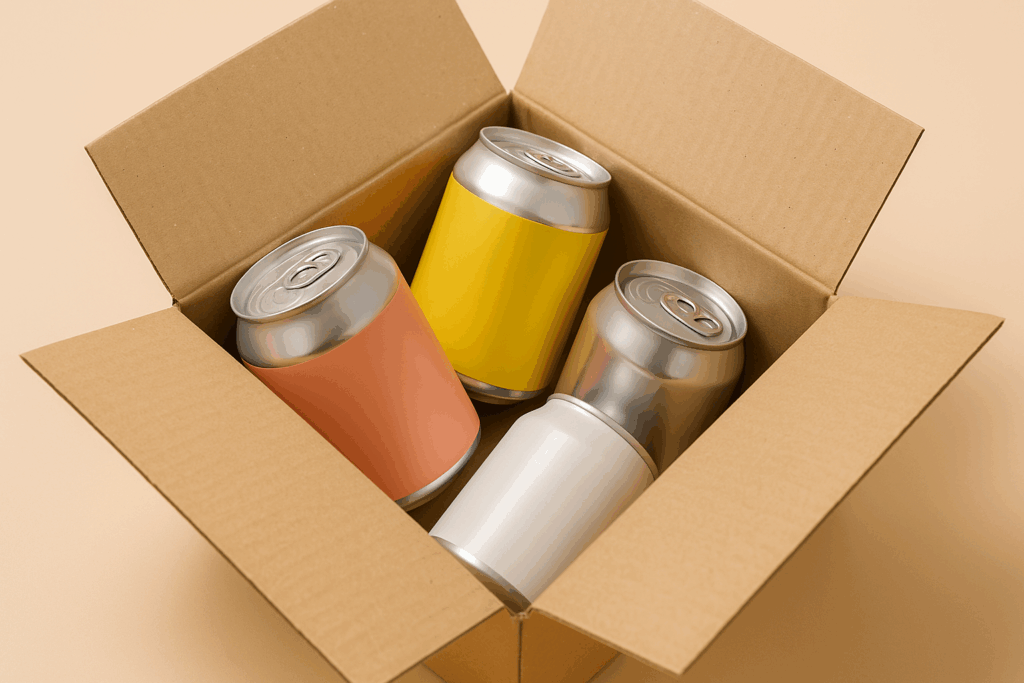Why Packaging Is More Than a Pretty Wrapper
Packaging in the food and beverage (F&B) industry does more than just safeguard the product, it also communicates your brand’s narrative, conveys your values, and influences how customers view your goods. Creative packaging design is now a strategic growth engine for F&B businesses.
However, in an environment where shelves are overflowing with vivid colors and big claims, how can your package stand out while still seeming purposeful? Customers need innovation, purpose, and an incentive to interact, not just attractiveness.
In this blog, we will explore 10 exceptional packaging ideas from the F&B industry, demonstrating how smart design decisions may improve sales, strengthen customer relationships, and improve brand impression.
1. Packaging with Purpose
If your packaging frustrates the user, no amount of branding can save the experience. That’s why many F&B brands are turning to creative packaging design that blends functionality with brand attitude.
Functional packaging also plays a key role in portion control, resealability, and portability. This is particularly important for snacks and ready-to-drink (RTD) products that must align with modern lifestyles. For example:
- Popcornopolis uses cone-shaped bags that make snacking easy and mess-free.
- Mason Dixie Biscuits features freezer-ready boxes that double as baking trays.
- Good Culture yogurt has a pull-tab spoon built into the lid which is ideal for eating on the move.
2. Storytelling Through Structure and Material
Does your product’s packaging contribute to its story? Today’s brands are embedding meaning into the shape, texture, and feel of their packaging, not just the label copy.
According to Packaging Gateway, this storytelling approach helps create deeper emotional connections with customers through thoughtful design.
This strategy creates emotional resonance in addition to being clever. Think about:
- You may visually and texturally bolster your sustainability claims with materials like recycled paper, cornstarch plastic, or fiber derived from sugarcane.
- Even when it’s a regular supermarket item, the goods feel like a gift when you open it to discover secret quotations or foil-stamped inner linings.
- As part of the narrative, product interaction is provided by custom molds or die-cuts (such as Chobani’s Flip cups).
Creative packaging design isn’t about over-designing, it’s about aligning every design choice with a bigger message. What message does your packaging send before a word is even read?
3. Minimalist Packaging with Maximum Impact
Minimalism frequently speaks louder in a world of sensory overload. Creative packaging that respects constraints can make a strong impression, particularly in F&B sectors linked to wellness, health, or luxury positioning.
Why does this resonate with consumers? Because minimalism quietly conveys:
- Transparency: What’s inside is clean, honest, and nothing extra.
- Tasteful restraint: Your brand doesn’t need loud graphics to stand out.
- Clarity of purpose: Every element serves a clear promise.
- Trust in quality: The product speaks for itself, not the packaging.
4. Interactive and Social-Media-Ready Designs
Today’s F&B packaging doesn’t end at the point of purchase, it lives on in the digital world. From TikTok unboxings to Instagram flat lays, creative packaging design that invites interaction can significantly extend your brand’s reach and relevance.
Even with minimal complexity, interactive packaging can have a significant impact. QR codes, for instance, can connect to brand stories, soundtracks, or recipes, such as Campbell’s Well Yes! an effort. To surprise consumers, some firms, like Snapple, place humorous inscriptions beneath lids.
Limited-edition designs are used by others, such as Coca-Cola’s Share a Coke campaign, to promote social media sharing and repeat business. Advanced technology is not necessary to create memorable brand experiences thanks to these minor interactive elements.
5. Eco-Friendly Innovations
Sustainability is becoming a must rather than an extra. However, many food and beverage brands find it difficult to provide eco-friendly packaging without compromising style. The creative packaging designs of today demonstrate that sustainability and style can coexist.
Brands can also improve the sustainability of their packaging by utilizing simple, eco-friendly alternatives. For instance, packaging can more safely disintegrate after use when soy-based inks are used.
Some companies, including Abel & Cole, have changed their plastic windows with biodegradable cellulose film for their baked goods. Others are investing in reusable packaging, like jars or tins, which customers can return or reuse, reducing waste and encouraging long-term brand loyalty.
6. Culturally Inspired and Regionally Rooted Packaging
Packaging with cultural roots can foster emotional commitment in a time of global brands and hyperlocal consumers. The first layer of truth in a brand that is based on geography or tradition is packaging.
Inaccurate signals may be interpreted as theatrical or, worse, as not being genuine. The right people create credibility in a culture.
Here are some questions about strategic packaging:
- Are you co-creating with designers from that culture?
- Is your narrative rooted in real heritage and not marketing images?
- Does your audience see themselves reflected in your design system?
7. Limited Editions and Seasonal Packaging as Sales Accelerators
Scarcity is a proven psychological trigger and limited-time packaging amplifies it. But great seasonal design isn’t just decorative, it’s aligned with brand strategy, product relevance, and customer behavior.
In the craft beverage space, Flying Dog Brewery uses rotating seasonal labels illustrated by Ralph Steadman. These wild, collectible designs become an annual event for fans and drive urgency for purchase before they’re gone.
What makes limited-edition packaging truly strategic:
- It taps into cultural moments that matter to your audience.
- It can test visual directions or sub-brands without full rollout risk.
- It encourages collectibility, loyalty, and social sharing.
But beware: A seasonal design that feels irrelevant, rushed, or off-brand can dilute your equity. Keep the customer at the center—what they care about in that moment.
8. Bold Typography and Visual Systems as Brand Assets
When utilized consistently and with purpose, typography is more than just a style preference, it is a brand asset. Bold text can quickly convey brand personality, define positioning, and command shelf presence in creative packaging design.
Good typography should be functional for your company, not just aesthetically pleasing. It must be immediately identifiable, particularly in congested areas like snack aisles or areas with ready-to-drink beverages. Additionally, it should be flexible enough to accommodate new product lines or variants in the future.
Above all, typography should convey the personality of your company, whether it be aggressive and edgy, elegant and high-end, or whimsical and out of the ordinary. Intentional application can make a powerful typographic system much more recognizable than a brand.
9. Texture, Tactility, and Multisensory Appeal
Design is more than just appearances, the way packaging feels in the hand can make an impression. Physical contact provides a distinct advantage in today’s digitally-first environment.
For F&B packaging, the following tactile components are worth considering:
- Soft-touch coatings that add comfort and a sense of sophistication.
- Raised inks or embossing to make brand elements physically stand out.
- Contrasting materials like matte against gloss to create depth and visual interest.
10. Transparent Packaging That Builds Trust (Literally)
In F&B packaging, transparency can be both literal and symbolic. In premium or health-conscious markets, clear windows, peel-back labels, or see-through pouches are smart choices that convey honesty and put the product front and center.
When used effectively, transparency in packaging can:
- Highlight the quality of the product, especially for natural or handmade items
- Build trust in categories where consumers are often skeptical, such as protein bars or juices
- Stand out visually on crowded shelves by offering a clean, honest look
Design That Sells, Speaks, and Sticks
Packaging is no longer just about shelf presence, it’s about shaping perception, building trust, and creating a brand moment people remember. From tactile finishes to transparent storytelling, today’s most effective F&B brands treat creative packaging design as a growth driver, not a cosmetic choice.
So if your packaging feels more functional than strategic, ask yourself, is it telling the right story? Is it memorable? Is it ownable? Because in a market full of choices, the brands that win are the ones whose design doesn’t feel like a choice at all.
Ready to make your packaging do more?
Let’s create design that doesn’t just sit on a shelf—it speaks, connects, and converts. 👉 Contact MAVRK Studio about your next packaging move.





